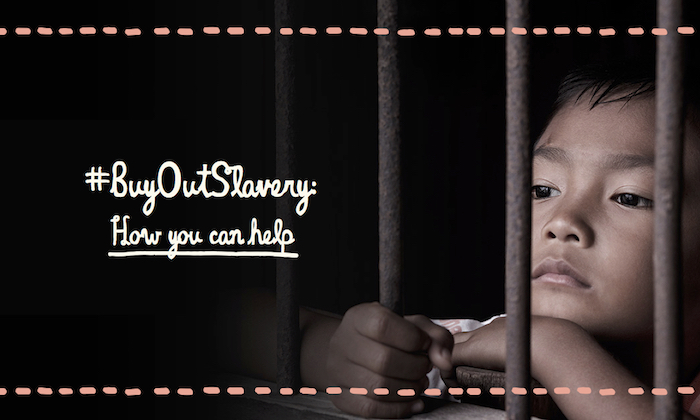
Slavery is sadly very much present in new and different forms around the world. Here’s one way you can help.
Here’s the scenario, mama: you step into your favourite high-street fashion store upon seeing ‘SALE’ splashed across its display windows. You head straight for the racks, find dead-cheap clothes, and don’t think twice about taking them to the cashier. But what if you stopped to think about how much it must have cost to make that piece of clothing, and the amount whoever made it was paid to make it? Then you look around and realise how much clothing there is all around you in the store, and imagine all the hands and hours it must have taken to make these cheap threads. The reality is that modern-day “slaves” can be sold for as little as $90 a day and have all their rights taken away from them. Unfortunately, slavery is not just in your clothes, but is in many of the items we consume, including food and electronics.
Inspired by the HISTORY Asia premiere of programming event, ROOTS (yup, the remake of the 1977 mini-series based on the novel written by Alex Haley), San Francisco-based NGO Not For Sale, along with HISTORY and The CNN Freedom Project, have worked together to launch the #BuyOutSlavery campaign to spread awareness of the issue in the Southeast Asian region. “Slavery” was offered as a product on local and regional websites like Naiise, With Every Bloom and Flesh Imp as part of the campaign, available for checkout to share on Facebook feeds with the aim of spreading the cause and its message.

More than 100 brands and personalities across the region have stepped up to lend their voices to this cause, initiating a strong debate online among the public who have seen their friends and families being exploited by the 150-billion dollar industry. More than 30 million people (thats more than 5 times Singapore’s population) are still part of modern day slavery, and we are part of the problem as long as we keep silent.
We spoke with the campaign founders to find out more about how we can contribute to the cause, where to donate and how to be more conscious consumers.
What is the difference between our traditional concept of “slavery” and today’s version? How has it changed?
Modern-day slavery is the acquisition of people using force, deception or coercion with the intent to exploit. Men, women, and children are sold into a $150 billion annual market for sex and labor. This is happening globally, and domestically; in urban and suburban areas; in hotels, restaurants, and on street corners.
After the international drug trade, trafficking of humans is tied with arms dealing as the second- largest criminal industry in the world. Human trafficking is the recruitment, transportation, transfer, harboring or receipt of persons, by means of the threat or use of force or other forms of coercion, of abduction, of fraud, of deception, of the abuse of power or of a position of vulnerability or of the giving or receiving of payments or benefits to achieve the consent of a person having control over another person, for the purpose of exploitation.
What kind of work have modern-day slaves been forced into?
Labor trafficking and debt bondage are the most common forms of trafficking today. Sex trafficking is often highlighted in the media but is not the primary form of modern-day slavery.
Using coercion, violence and deception, labor traffickers force victims to work against their will in industries that range from small mom-and-pop shops to enormous mineral extraction camps for commodities such as gold. Some individuals enter into work agreements willingly but accrue enormous debt to the trafficker in the form of food, shelter, documentation, and travel fees. The traffickers inflate these costs and tack on enormous interest rates that condemn their new hires to a life of underpaid labor or slavery.

What percentage of these slaves are children?
C.S.E.C refers to the commercial sexual exploitation of children. The majority of child victims come from environments of extreme instability, and most have suffered sexual abuse prior to their commercial exploitation. Homeless and street youth, or those facing food and shelter insecurities are also easy targets. It’s estimated that about 2 million children are exploited in the commercial sex industry worldwide.
How widespread is modern-day slavery in Asia specifically compared to the rest of the world? Are there particular industries where it’s more prevalent?
According to the U.S. State Department, Thailand, Malaysia, Venezuela, North Korea and Syria rank among the worst countries for human trafficking. Slavery is wrapped up in almost every industry’s supply chain, tainting the food we eat, the clothes we buy, and the electronics we love.
How did modern slavery escalate to a point that we now have more slaves than ever in history?
Modern-day slavery exists because there is skyrocketing demand. Consumer demand for cheap products, labor and services is enormous. In the commercial sex industry business is booming. Traffickers can work in virtually every country around the world and move to wherever the greatest profit can be extracted. Their prime recruitment zones shift rapidly to best exploit opportunities. Combating the crime is complicated. Its covert nature coupled with improperly trained government and civic bodies, corruption and lax enforcement of laws and statutes create the perception of low risk for traffickers.
What actions can we take to show support for the campaign, and to curb unknowing contributions to the industry?
The #BuyOutSlavery campaign aims to shine a light on the plight of enslaved individuals today – child labour, salary below poverty level, unliveable living conditions – and expose shoppers across Asia to the reality and prevalence of modern slavery. Consumers can choose to donate to Not For Sale. All funds raised will support Not For Sale in their efforts to provide survivors of slavery and at-risk communities education, healthcare and legal services, and economic opportunities.

Where is the ROOTS series available for viewing?
ROOTS – the story of an African slave who was sold to America, and his struggle to retain his own identity, dignity and hope in the face of hatred and oppression – can be viewed on HISTORY Asia at the timings below. The show boasts an award-winning cast starring Forest Whitaker, Anna Paquin, Laurence Fishburne, and more.
Episode 1 reruns on 10/6 (11PM to 1AM), 11/6 (11:35AM to 1:35PM), 12/6 (10PM – 12AM)
Episode 2 reruns on 17/6 (11PM to 1AM), 18/6 (11:35AM to 1:35PM), 19/6 (10PM to 12AM)
Episode 3 reruns on 24/6 (11PM to 1AM), 25/6 (11:35AM to 1:35PM), 26/6 (10PM to 12AM)
Episode 4 reruns on 1/7 (11PM to 1AM), 2/7 (11:30AM to 1:30PM), 3/7 (10PM to 12AM)
![]()
For more info, mamas, check out this award-winning series on slavery in Asia’s fishing industry, or read Sassy Mama Jennifer’s account of creating a capsule wardrobe to support only sustainable clothing companies that pay laborers a fair wage.
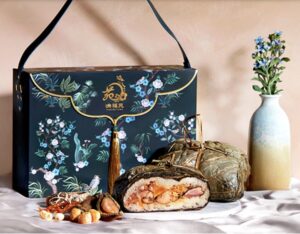
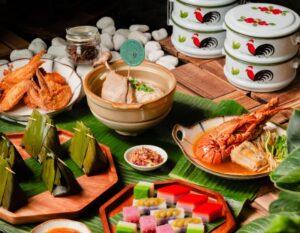




 View All
View All





 View All
View All

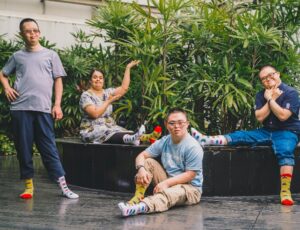



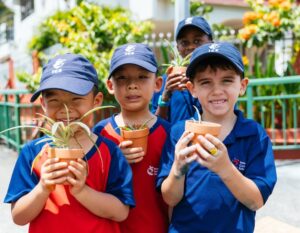



 View All
View All




